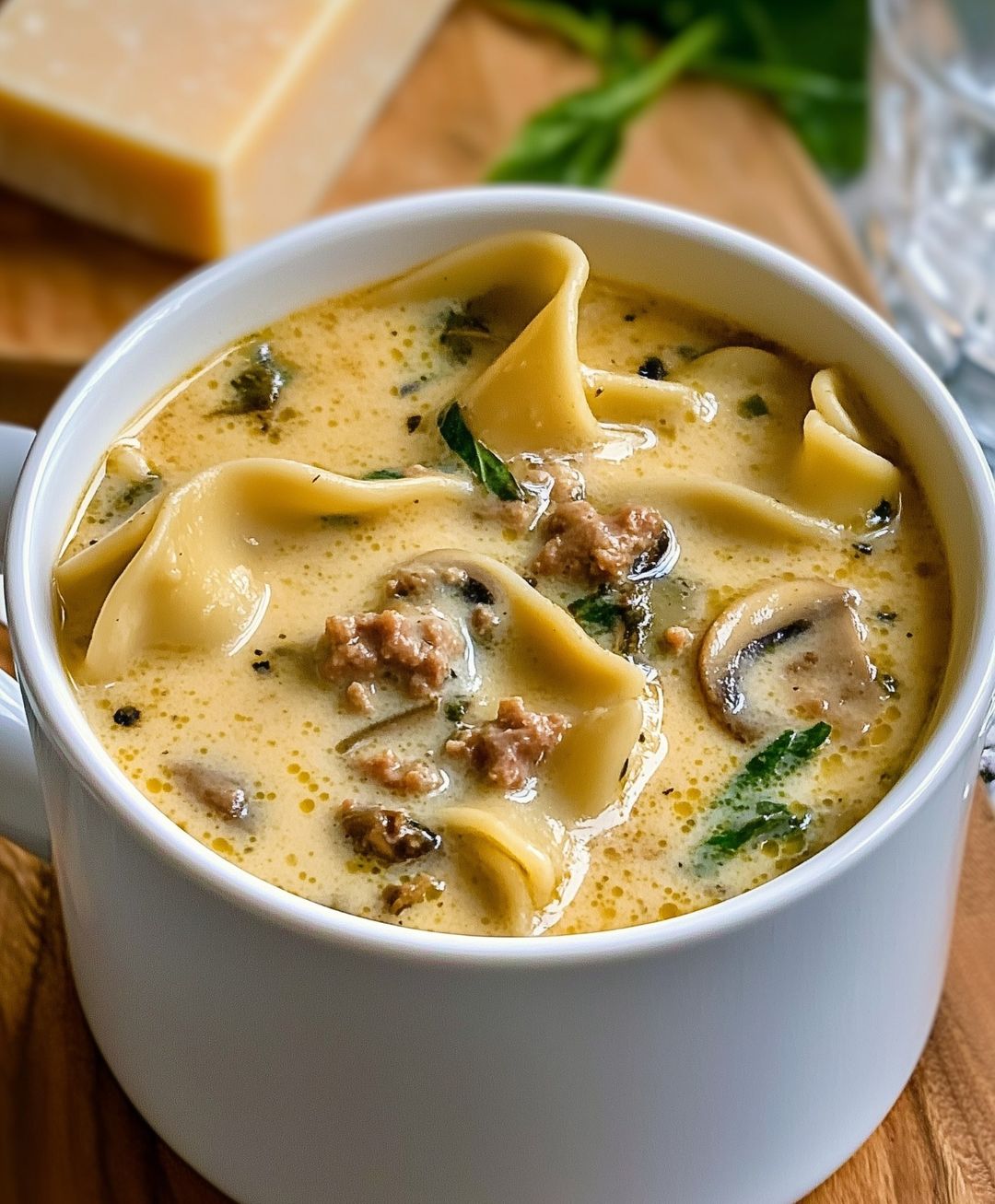Notes:
Sausage choice: You can use either pork or turkey sausage, depending on your preference. Turkey sausage will give a lighter version of the soup.
Noodles: Breaking the lasagna noodles into pieces allows them to cook quickly and soak up the flavors. Feel free to use gluten-free noodles if needed.
Spinach: Fresh spinach works best here, but you can substitute with other greens like kale or Swiss chard if desired.
Alfredo Sauce: For a thicker sauce, cook it a little longer to allow more time for it to reduce. If you prefer a lighter sauce, you can use half-and-half or skim milk instead of whole milk.
Make-ahead: This soup can be made a day in advance. The flavors often improve after sitting overnight in the fridge!
Freezing: The soup can be frozen, but the texture of the noodles may change slightly after thawing. To preserve the best texture, freeze the soup without the noodles, and add them fresh when reheating.
Nutrition Information:
Can I use a different type of meat instead of sausage?
Yes! You can swap the ground sausage for ground beef, turkey, or chicken.
If you’re looking for a leaner option, turkey or chicken are great alternatives.
Just be sure to season the meat with a little extra flavor if needed, since sausage tends to add more spices on its own.
Can I make this soup ahead of time?
Absolutely! This soup can be made a day ahead.
In fact, the flavors often deepen and improve after sitting in the fridge overnight.
When reheating, you may need to add a little extra broth or milk to adjust the consistency if it thickens too much.
Can I freeze this soup for later?
Yes, this soup can be frozen for up to 3 months.
However, it’s best to freeze it without the noodles, as they may become mushy when thawed.
Add the noodles fresh when you’re ready to reheat the soup.
To reheat, simply thaw in the fridge overnight and warm on the stove.
Can I make this soup gluten-free?
Yes, you can easily make this recipe gluten-free by using gluten-free lasagna noodles.
There are several gluten-free pasta brands available, and they work well in this soup.
Just make sure the chicken broth and any other packaged ingredients are gluten-free as well.
How can I make the soup even creamier?
To make the soup extra creamy, you can add a bit more Parmesan cheese or stir in a small amount of heavy cream to the Alfredo sauce.
Another option is to add a splash of cream cheese or mascarpone cheese to the soup for an even richer texture.
Do I need to cook the lasagna noodles before adding them to the soup?
No, you don’t need to cook the lasagna noodles separately.
Just break them into smaller pieces and add them directly to the soup.
They’ll cook in the broth while simmering, absorbing the flavors of the soup as they cook.
Can I use pre-cooked sausage or another type of protein for this recipe?
Yes, you can use pre-cooked sausage (like Italian sausage links, cooked and crumbled) or even rotisserie chicken as a shortcut.
If using a different protein, just make sure to cook it thoroughly and season it well to maintain flavor in the soup.
What if my Alfredo sauce doesn’t thicken enough?
If your Alfredo sauce isn’t thickening as you’d like, try cooking it for an extra minute or two while stirring constantly.
You can also add a little more flour to the butter-flour mixture to help it thicken.
If it’s too thick, just add a splash of milk or broth to loosen it up to your desired consistency.
Can I add more vegetables to the soup?
Absolutely! Feel free to add extra vegetables like peas, bell peppers, zucchini, or even carrots.
Just be sure to cook them until tender before adding the Alfredo sauce to keep everything balanced and flavorful.
How do I prevent the noodles from becoming too soft or mushy in the soup?
To avoid overcooking the noodles, keep an eye on them as they simmer and taste for doneness around the 10-minute mark.
If you think the noodles are getting too soft, turn off the heat and let the soup sit for a couple of minutes before serving.
Also, if you plan to have leftovers, consider cooking the noodles separately and adding them fresh when reheating to maintain their texture.
ADVERTISEMENT

